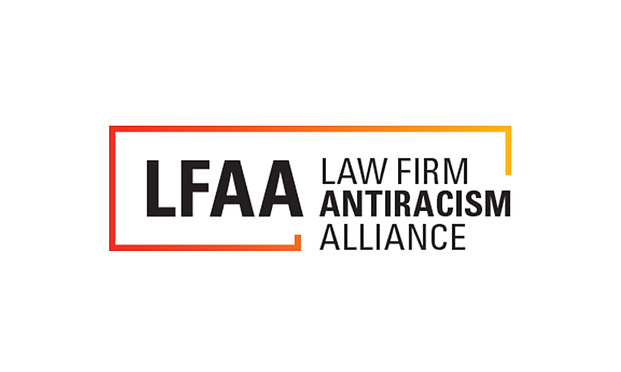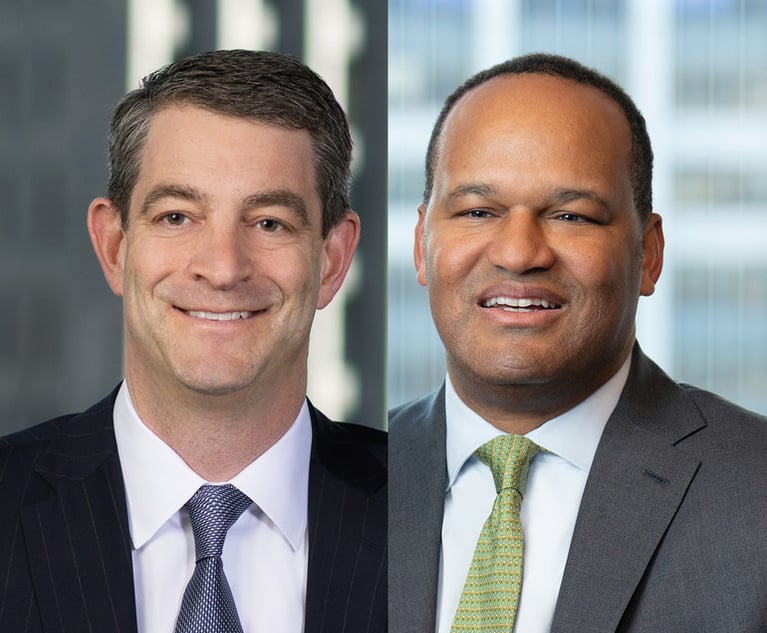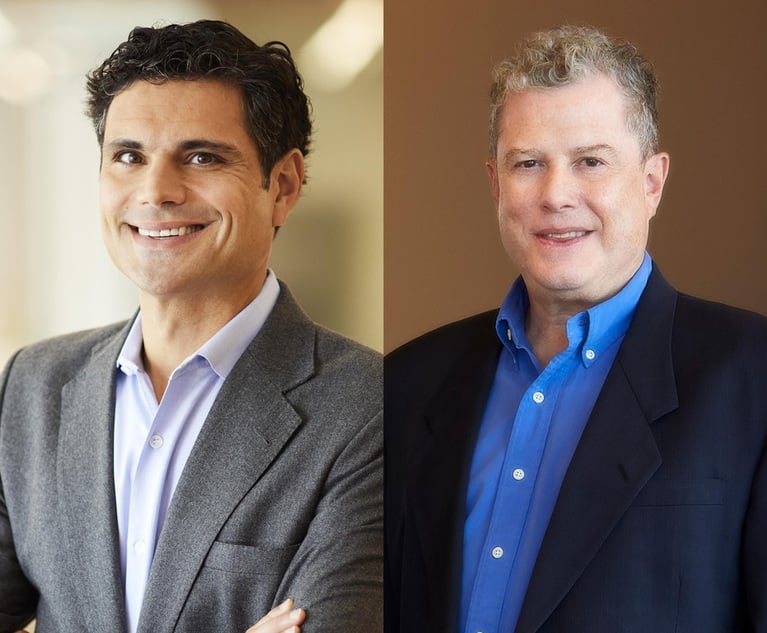'We Have to Succeed': Law Firm AntiRacism Alliance Holds First Summit
With over 240 legal firms across the globe participating in the unprecedented effort around ending systemic racial injustice, there is optimism to be had and a lot of work to be done.
July 31, 2020 at 03:30 PM
5 minute read
 Law Firm Antiracism Alliance.
Law Firm Antiracism Alliance.
The Law Firm Anti-Racism Alliance, which now boasts north of 240 participating firms, held its first summit, virtually, from Wednesday to Thursday, looking to put tactical reality to the strategic task of changing the way our institutions deal with racial inequality, an issue that some institutions have in fact perpetuated.
"This was a tremendous undertaking, with a lot of resources and a deep commitment from a large amount of people," Brenna DeVaney, director of pro bono programs at participating firm Skadden, Arps, Slate, Meagher & Flom, said of the summit. "We hoped to do two things: ensure a foundation for understanding what systemic racism is and identify what work needs to be done and how we are going to organize ourselves to do it."
The summit's agenda included the aspiration for several takeaways: Deepening the understanding of intersecting components of systems that create and perpetuate disadvantages for Black communities and other communities of color and advantages for white individuals and communities; presenting the LFAA's mission, role and responsibilities; and developing an action plan to move the LFAA's work forward.
DeVaney said the first day of the conference was devoted to listening. The summit featured speakers from various civil liberties and racial justice advocacy organizations to help the firms understand the work they have been doing and where the power and connections of Big Law could assist.
Kim Koopersmith, chair of D.C.-based Akin Gump Strauss Hauer & Feld, said that she was impressed by the turnout and enthusiasm for the work the attendees showed, but that they also needed to be mindful of how the racial justice partner organizations work if they are going to be effective in facilitating change.
"It shows a lot of promise, but that promise also shows the challenges ahead," Koopersmith said. "We have over 200 very eager and committed law firms, and need to see a path forward on how to leverage their collective expertise and experience. But we have to be able to offer it in a way that allows these organizations to advance their agendas."
She said an attendee framed the LFAA as an "air traffic control" of sorts, providing a structure and organization that can direct those efforts.
"This is a group that can marshal assets that is different from what any single law firm can do," she said. "We can take a holistic approach to issues."
Daniel Brown, a litigation partner at Sheppard, Mullin, Richter & Hampton and chair of the firm's pro bono committee, echoed the idea that the efforts needs to be grounded in what the racial justice organizations are already doing, and that is going to require detailed structure and organization.
"It isn't going to happen tomorrow," he said. "If you talk to five people who were there, they will all say this is a movement rather than a moment."
Brown said he was impressed not just with the attendance, which multiple sources said didn't drop below 500 people for any given session, but the seniority of the personnel.
"This was attended well not just by pro bono and diversity and inclusion folks, but by chairpeople as well," he said.
While enthusiasm and attendance were high, the participants were well aware of the fact that Big Law has its own housekeeping problems on this issue, and will need to be diligent about making sure this effort doesn't play into the narrative of all talk and no walk.
"One of the first conversations we had when dreaming up the LFAA was the acknowledgement that law firms have inclusion and equity work to do," DeVaney of Skadden said. "There is a deep understanding to make sure this happens alongside the pro bono efforts of firms, which is why we included diversity and inclusion professionals in the planning of the summit. It needs to be informed by them."
DeVaney said the alliance is planning another summit for the fall, and hopes to have a broader conversation about what needs to get done now that a structure is taking shape.
"We will bring in more people around race advocacy, some academics and policy experts to get a better sense of the work that needs to get done," she said.
The road will be a long one. The structures in place that hinder progress for nonwhite peoples were decades in creation, and the expectation is that they will not be changed in a few months, or even a few years.
"This is not a six-month project," DeVaney said. "This is a five-to-30-year project."
Koopersmith believes the LFAA, which when announced had its fair share of detractors, is on the right path.
"They have created the infrastructure, and did it well," she said. "Now there is reason, as they are doing, to recognize this is a long-term commitment. But that commitment needs to be balanced with short term efforts as well."
Read More:
Over 125 Firms Have Joined the Law Firm Antiracism Alliance
'Help Do Justice': Big Law Commits to Litigation Fight Against Racist Policing
Big Law's Double Talk on Racial Equality: This You?
This content has been archived. It is available through our partners, LexisNexis® and Bloomberg Law.
To view this content, please continue to their sites.
Not a Lexis Subscriber?
Subscribe Now
Not a Bloomberg Law Subscriber?
Subscribe Now
NOT FOR REPRINT
© 2025 ALM Global, LLC, All Rights Reserved. Request academic re-use from www.copyright.com. All other uses, submit a request to [email protected]. For more information visit Asset & Logo Licensing.
You Might Like
View All
'None of Us Like It': How Expedited Summer Associate Recruiting Affects Law Students and the Firms Hiring Them

Latham's Lateral Hiring Picks Up Steam, With Firm Adding Simpson Practice Head, Private Equity GC
3 minute read

Leaning Into ‘Core’ Strengths, Jenner’s Revenue Climbs 17%, Profits Soar 23%
4 minute readLaw Firms Mentioned
Trending Stories
- 1Retired NY Chief Judge Jonathan Lippman Playing Key Role in Advancing 'Weinstein Bill'
- 2How I Made Partner: 'Take Every Opportunity to Get Involved in the Business Side of the Firm,' Says Alyssa Domzal of Ballard Spahr
- 3People in the News—Feb. 5, 2025—Eckert Seamans, Rawle & Henderson
- 4Librarian's Termination Violated First Amendment Protections, Lawsuit Claims
- 5Choice-of-Law Issues as the UCC 2022 Amendments Come into Effect
Who Got The Work
J. Brugh Lower of Gibbons has entered an appearance for industrial equipment supplier Devco Corporation in a pending trademark infringement lawsuit. The suit, accusing the defendant of selling knock-off Graco products, was filed Dec. 18 in New Jersey District Court by Rivkin Radler on behalf of Graco Inc. and Graco Minnesota. The case, assigned to U.S. District Judge Zahid N. Quraishi, is 3:24-cv-11294, Graco Inc. et al v. Devco Corporation.
Who Got The Work
Rebecca Maller-Stein and Kent A. Yalowitz of Arnold & Porter Kaye Scholer have entered their appearances for Hanaco Venture Capital and its executives, Lior Prosor and David Frankel, in a pending securities lawsuit. The action, filed on Dec. 24 in New York Southern District Court by Zell, Aron & Co. on behalf of Goldeneye Advisors, accuses the defendants of negligently and fraudulently managing the plaintiff's $1 million investment. The case, assigned to U.S. District Judge Vernon S. Broderick, is 1:24-cv-09918, Goldeneye Advisors, LLC v. Hanaco Venture Capital, Ltd. et al.
Who Got The Work
Attorneys from A&O Shearman has stepped in as defense counsel for Toronto-Dominion Bank and other defendants in a pending securities class action. The suit, filed Dec. 11 in New York Southern District Court by Bleichmar Fonti & Auld, accuses the defendants of concealing the bank's 'pervasive' deficiencies in regards to its compliance with the Bank Secrecy Act and the quality of its anti-money laundering controls. The case, assigned to U.S. District Judge Arun Subramanian, is 1:24-cv-09445, Gonzalez v. The Toronto-Dominion Bank et al.
Who Got The Work
Crown Castle International, a Pennsylvania company providing shared communications infrastructure, has turned to Luke D. Wolf of Gordon Rees Scully Mansukhani to fend off a pending breach-of-contract lawsuit. The court action, filed Nov. 25 in Michigan Eastern District Court by Hooper Hathaway PC on behalf of The Town Residences LLC, accuses Crown Castle of failing to transfer approximately $30,000 in utility payments from T-Mobile in breach of a roof-top lease and assignment agreement. The case, assigned to U.S. District Judge Susan K. Declercq, is 2:24-cv-13131, The Town Residences LLC v. T-Mobile US, Inc. et al.
Who Got The Work
Wilfred P. Coronato and Daniel M. Schwartz of McCarter & English have stepped in as defense counsel to Electrolux Home Products Inc. in a pending product liability lawsuit. The court action, filed Nov. 26 in New York Eastern District Court by Poulos Lopiccolo PC and Nagel Rice LLP on behalf of David Stern, alleges that the defendant's refrigerators’ drawers and shelving repeatedly break and fall apart within months after purchase. The case, assigned to U.S. District Judge Joan M. Azrack, is 2:24-cv-08204, Stern v. Electrolux Home Products, Inc.
Featured Firms
Law Offices of Gary Martin Hays & Associates, P.C.
(470) 294-1674
Law Offices of Mark E. Salomone
(857) 444-6468
Smith & Hassler
(713) 739-1250










